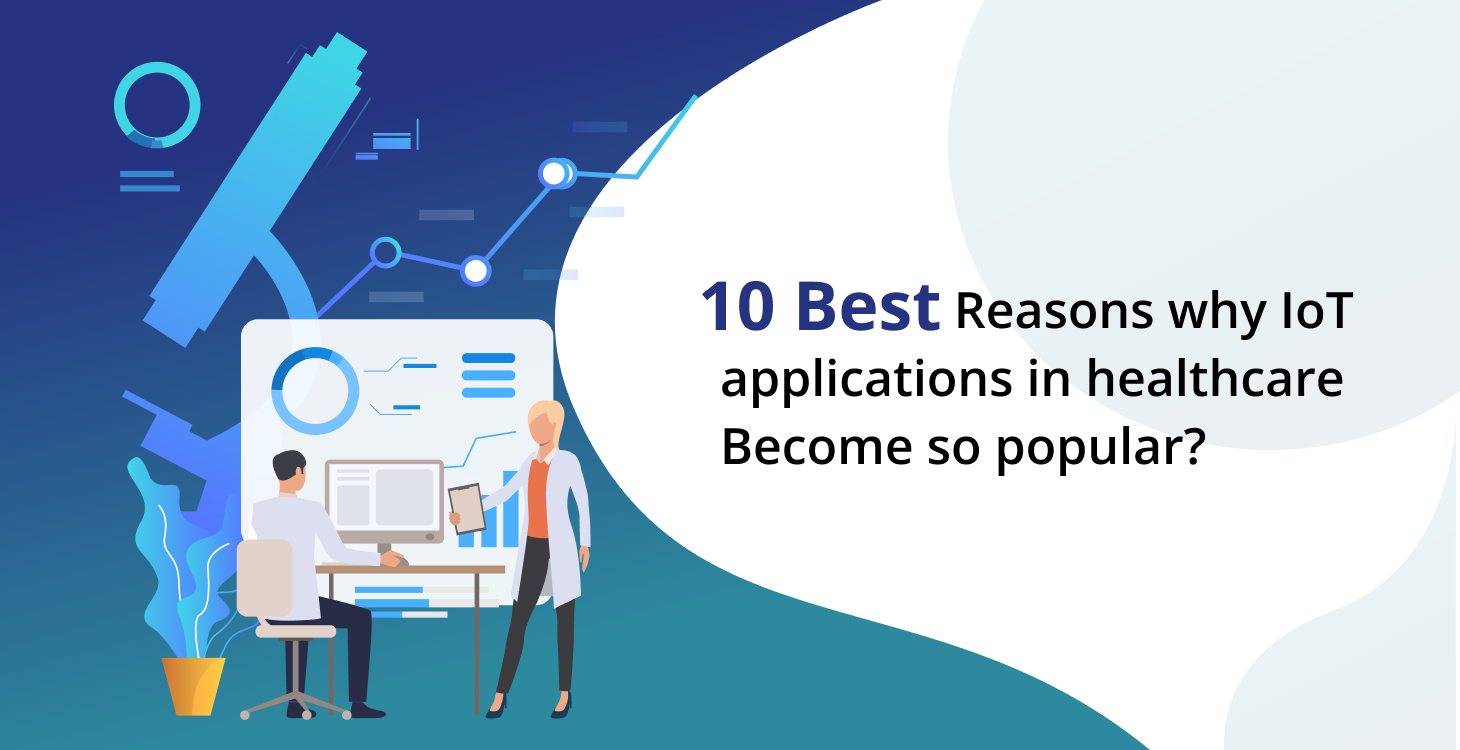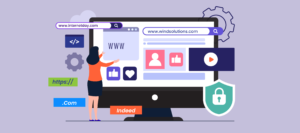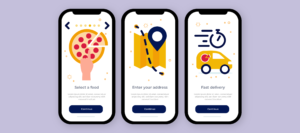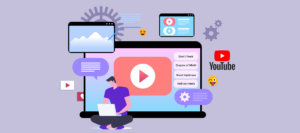In the future, most people will no longer be able to afford basic healthcare, a huge portion of the population will become unproductive due to old age, and chronic diseases will be more common.
Is it the end of the world as we predicted? Whatever the case, IoT app development may be beneficial.
While technology cannot reverse population growth or completely remove chronic diseases, it can at least simplify healthcare by providing users with affordable medical services.
The Internet of Things (IoT) is becoming a vital component of numerous sectors as the world becomes more computerized. Similar to other industries, the healthcare sector is seeing a tremendous increase in the impact of IoT.
IoT Applications in healthcare use cases are common worldwide, ranging from enhanced equipment control to virtual medical assistance. There is rarely any debate over what the Internet of Things is or how it functions anymore because its applications in healthcare are so far-fetched. With a quick diagnosis of diseases and the right treatment, modern technology can save patients’ lives.
In this blog, we’ll look at the reasons IoT Applications in healthcare is transforming the healthcare sector and talk about its examples, impacts, and practical difficulties. So let’s get started without further ado.
What is IoT in Healthcare?
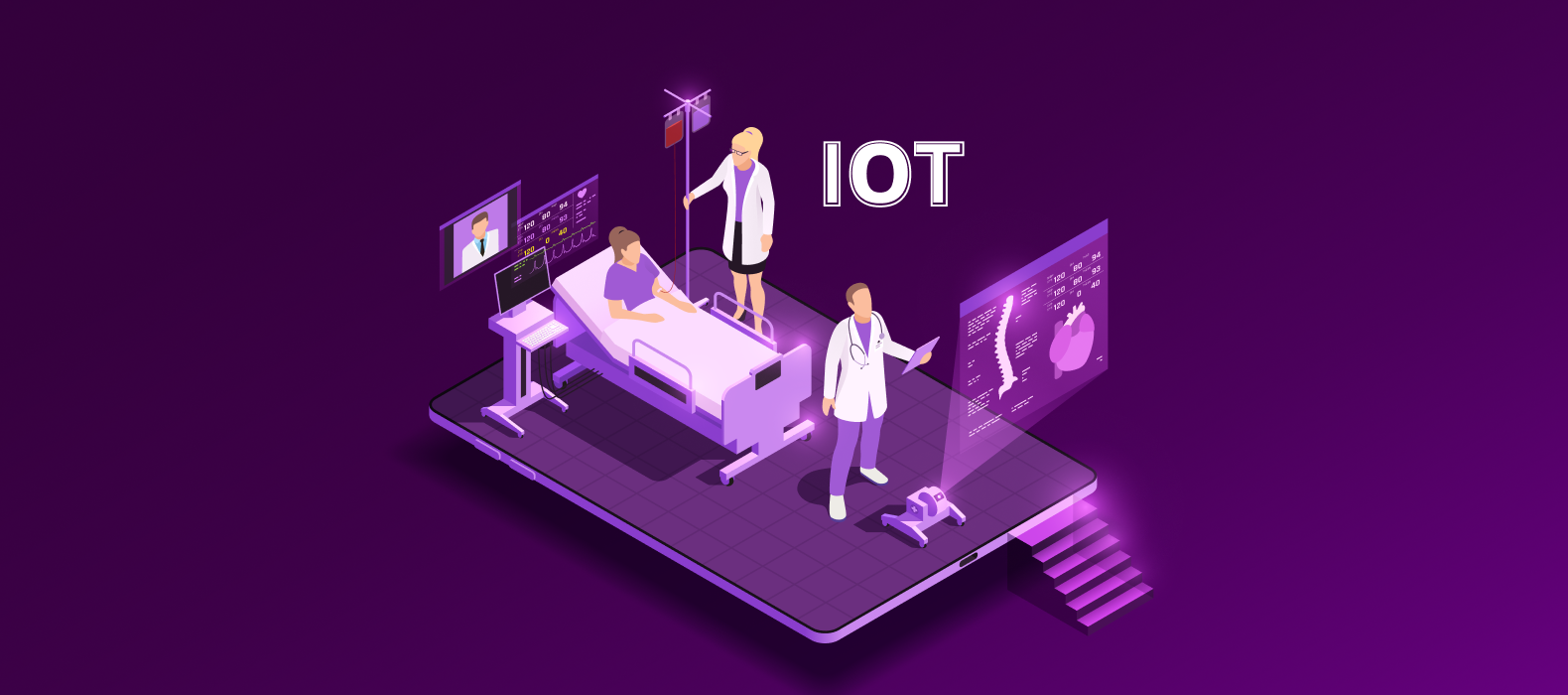
IoT Applications in healthcare are being implemented or are being researched by more than 60% of healthcare companies worldwide. In the upcoming years, a large increase anticipates the number of individuals and healthcare professionals adopting IoT-connected devices for health monitoring.
IoT in healthcare refers to linked devices utilized in hospitals, clinics, or other medical environments. Smart thermostats, automatic lighting, security systems, digital signs, and many sensors are common IoT devices. Some of these gadgets specialize in treating patients, comfort, and safety when used in a medical environment.
IoT Applications in healthcare can also refer to integrating medical devices into a network. Medical IoT and the Internet of Medical Things are terminologies that distinguish healthcare-specific IoT devices from traditional IoT technologies.
Reasons IoT Applications in Healthcare Become Popular
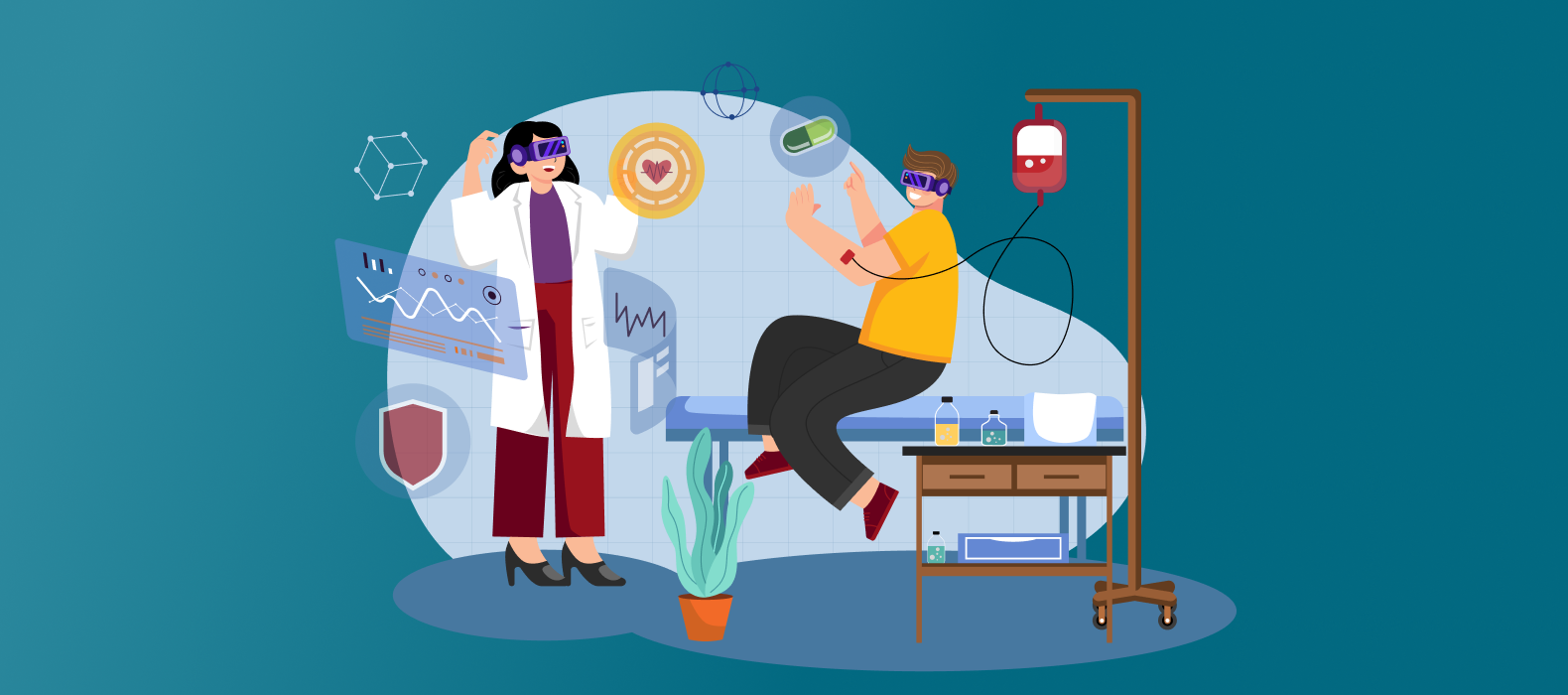
1. Better Patient Health:
What if the wearable device that’s attached to a patient alerts you when his heart rate is out of control or if he’s fallen behind on self-care and then shares that information with other devices you utilized while you were at work? IoT guarantees that every small detail considers making the best patient decisions by updating personal health data on the cloud and removing the need to enter it into the EMRs. It can also use for home monitoring and medicinal adherence.
2. Makes Hospitals Smarter:
IoT Applications in healthcare allows for regular and precise patient health monitoring. In addition, there are several other ways that IoT improves the performance of the healthcare sector. Asset management is one of the components. Wheelchairs, oxygen concentrators, nebulizers, defibrillators, and other monitoring devices are all regularly tracked to know where they are in real-time. The hospital administration can quickly follow their real-time whereabouts due to the IoT sensors connected to these. Medical personnel must be present at various sites, and they may easily track their deployment.
3. Improve Patient Engagement & Satisfaction:
IoT Applications in healthcare can improve surgical workflow and boost patient happiness. For instance, telling a patient’s family that they will release after surgery. Since there is less need for direct patient-physician interaction due to gadgets connected to the Internet generating useful data, it can boost patient engagement by allowing patients to spend more time interacting with their doctors.
4. Turn Data Into Actions:
The future of IoT Applications in healthcare will involve quantified health since it is easier to improve measured health. It makes sense to utilize quantified health technology. We also understand that data impacts performance, which is why we need IoT to measure and monitor health for better results.
5. Preventative Care:
Prevention has become a top area of concern as healthcare costs are expected to rise out of control. People can live better lives and avoid sickness due to the widespread availability of real-time, high-fidelity data about each person’s health.
6. Improvements in Population Health Management:
Because the data acquired by the device will fill in the data that is otherwise missing from the EHR, IoT enables providers to integrate widgets to observe the growth of wearables. Care teams can employ IoT for home monitoring of chronic conditions and insight-driven prioritizing. This is another way carers can impact patients’ daily lives.
7. Continuous Health Monitoring:
Nowadays, patients can receive real-time tailored health status information via fitness bands, heart rate monitoring cuffs, blood pressure measuring bands, glucometers, and more sophisticated smart healthcare equipment. They advise the patient to monitor their daily caloric intake, increase their exercise regimen, identify trends in their blood pressure, and more. It becomes increasingly important for senior patients to monitor their health status on a daily basis, and smart healthcare gadgets make their lifestyles easier by alerting them to any potential hazard in advance! It notifies the patient and their family members of any sudden changes in their health status to forewarn them.
8. Affordable and end-to-end connectivity:
Using the most recent technology and improved connectivity made possible by the Internet of things in healthcare applications can improve data sharing and connectivity. Tracking and diagnosing sicknesses is simple and takes less time due to technological advances like Bluetooth and Wi-Fi.
IoT, for instance, can link various systems and gadgets in a hospital, improving care coordination. IoT Applications in healthcare can also save healthcare expenses by boosting productivity and enhancing patient outcomes.
9. Proper use of resources:
Many resources need for modern medicine, which is not always sufficient to meet all demands. IoT technology drastically lowers transportation, staffing, and building upkeep costs. But it isn’t easy to introduce IoT technologies to the healthcare market. Inadequate privacy laws and the usage of outdated infrastructure are the key problems. IoT technology implementation is now rather expensive as well. However, the correct IoT technology investments yield a return extremely quickly.
10. Making Cities Healthier:
More than half of the world’s population lives in cities, which are dynamic living systems. Millions of people live happy lives, choosing modes of transportation, sitting in traffic, and riding bikes through parks. The addition of weather to this already complicated mix of individual and group activity results in more intricate patterns of air quality that alter daily.
We require real-time information on all scales to comprehend the air quality patterns throughout the cities and how they affect the urban population. The IoT enters the picture in this situation. IoT technologies deliver real-time data from many sites around the towns, pointing toward smart city projects.
How IoT impacted Healthcare Industry
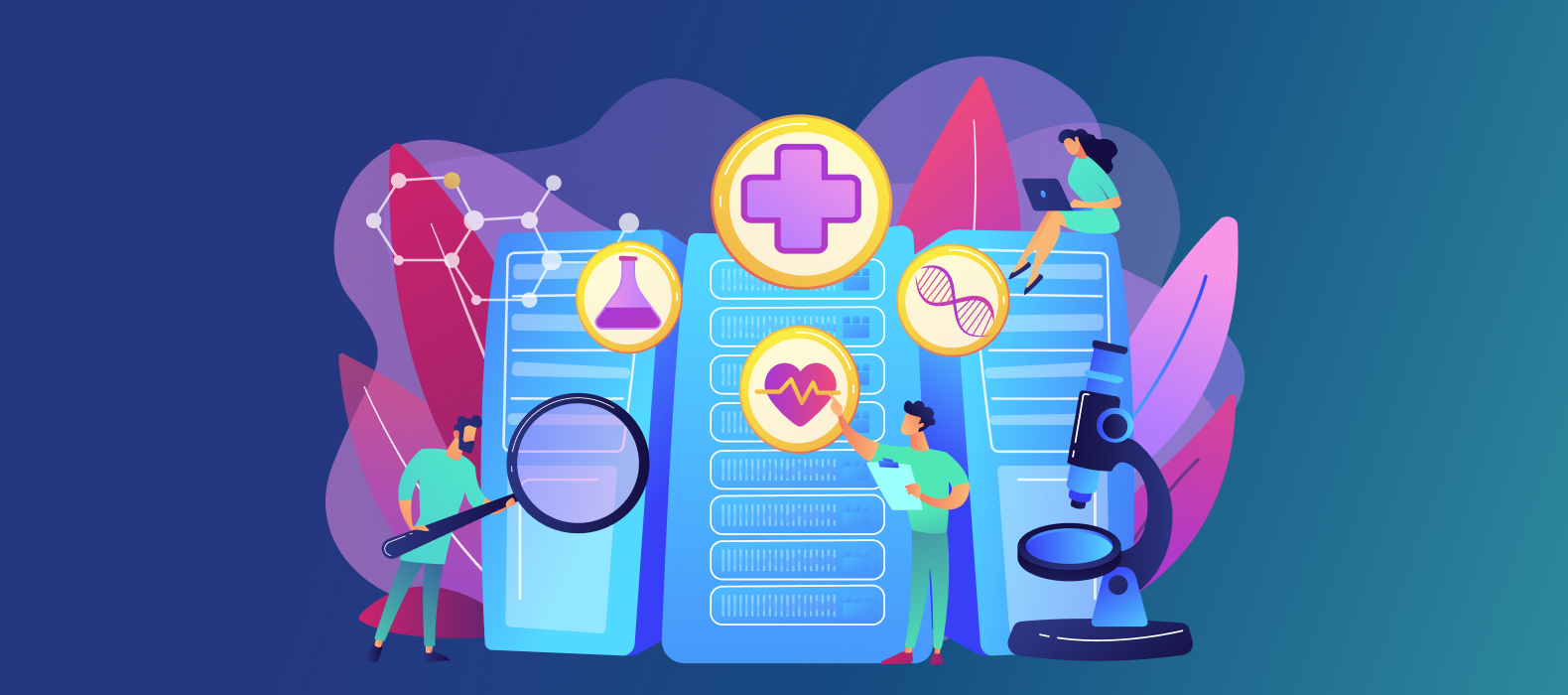
Despite the difficulties in deploying IoT Applications in healthcare, it is important to recognize that the industry is already benefiting from the technology. If you didn’t know, technology is changing the industry in the following ways:
1. Manage Depression:
IoT is leading the charge to tackle mental ailments like depression and physical health. The backend algorithms monitor user-generated data on emotions and behavior and present it to the users in a visually appealing style. Additionally, they identify sleep patterns and recommend activities as treatments. Although it is currently in beta testing, this shows promise.
2. Counterfeit Medications:
Counterfeit drugs are a major problem for the healthcare sector. Patients who receive prescriptions from doctors consume medicines that deal with human life. As a result, manufacturers of fake drugs have an edge because we rarely have the attitude to verify their legitimacy. However, IoT is utilizing applications, QR codes, and blockchain implementation in the IoT supply chain to do business in the most effective manner possible.
3. Real-Time Remote Supervision:
The devices are interconnected to track patients’ vital signs continuously. Data is created and transmitted among the devices every second to improve patient care in hospitals. In addition to lowering the number of employees required to care for the numerous patients, this also eliminates the possibility of human error. When a patient’s vital signs decline, automation alerts doctors.
4. Check Your Blood Pressure:
IoT Applications in health care assists patients in managing their blood pressure levels as wearable technology becomes more prevalent. The wearable technology detects when the level rises and alerts the user to take medication. This significantly lowers the risk of cardiac arrests as well.
Examples of IoT Applications in Healthcare

Here are some IoT applications in healthcare that everybody should be aware of:
1. Trackable Inhalers:
By sending data to patients’ smartphones or tablets, Internet of Things inhalers can alert patients about the activities or situations that trigger their asthma attacks. Additionally, their doctors can receive that information. Patients who have connected inhalers are also reminded when to take their meds.
2. Location Services:
With the help of IoT sensors, healthcare employees can quickly discover items like wheelchairs, scales, defibrillators, nebulizers, pumps, or monitoring equipment. Physical equipment frequently gets lost or is challenging to find, but with IoT, personnel will always be aware of its location.
3. Connected contact lenses:
Another chance for non-intrusive, passive healthcare data collection is an offer by smart contact lenses. The fact that connected contact lenses have patents by businesses like Google suggests that they may also have tiny cameras enabling users to shoot images with their eyes.
Smart lenses have the potential to transform human eyes into effective digital engagement tools, whether they utilize to enhance health outcomes or for other purposes.
4. Heart-rate monitoring:
Even for physically present individuals at medical institutions, measuring heart rates might be difficult, as is the case with glucose. Periodic heart rate checks are ineffective in preventing sudden heart rate changes. The traditional continuous cardiac monitoring systems used in hospitals require patients to wire to the equipment, which limits their movement permanently.
Heart rate monitoring is now possible using several small IoT devices, allowing patients to roam freely while still having their hearts monitored. Although it’s still difficult to guarantee exact readings, most modern equipment can produce accuracy rates of 90% or more.
5. Activity Monitors for Cancer Patients:
The best course of action for a cancer patient typically depends on factors other than age and weight. The right treatment approach for them will depend greatly on their habits and levels of fitness. Activity monitors keep tabs on a patient’s activities, weariness, appetite, etc. Additionally, the data gathered from the tracker before and after therapy will let medical practitioners know what changes should make to the suggested treatment plan.
6. Medication Dispensers:
Nowadays, patients might have implants that deliver medication consistently throughout the day. When patients’ prescriptions need to renew, they will inform. During routine appointments, doctors might advise about missing medicines.
7. Observing hand hygiene:
In order to reduce the risk of spreading infection, there hasn’t historically been an effective way to make sure that staff members and patients inside a healthcare facility washed their hands appropriately.
Hospitals and other healthcare facilities now widely use IoT devices to remind patients to wash their hands before entering patient rooms. The devices might provide suggestions on the best ways to sanitize to reduce a specific danger for a certain patient.
The fact that these gadgets can merely serve as a reminder for individuals to wash their hands, rather than actually performing the action, is a serious drawback. However, evidence indicates that these gadgets can lower hospital infection rates by more than 60%.
Conclusion
IoT modifies how healthcare facilities are provided. These technologies enhance the product by combining small modifications to get a more significant result.
Well, the issues in healthcare have never been fun. especially the ones that keep coming up. Here, IoT (Internet of Things) transmits important health data via high-frequency sensors, which can easily share with doctors to address recurring health issues at their source. The Internet of Things (IoT) has grown to such a powerful level that it may one day affect every single person on the planet. The day when a patient needed to wait a long time to receive the results of their checkup is long gone.
IoT applications in healthcare is becoming so prevalent in healthcare facilities that we can fully anticipate seeing next-generation IoT devices deliver cognitive services as part of their offering, enabling real-time data processing at the edge. Making IoT and Healthcare a successful, honorable alliance for the advancement of people is already a goal of many large tech businesses.
If you want to develop custom Internet of Things applications that meet your needs, Pairroxz Technologies leverages the best IoT frameworks. Our team would be happy to learn about your business concept and help you with your needs.
FAQs
Question 1: How is the Internet of Things used in healthcare?
People can employ a variety of Internet of Things applications for their gain. Many patients, medical professionals, families, and insurance companies can use them to follow crucial information and updates for the concerned person. Healthcare workers become more attentive to the patients, so there is no negligence.
Question 2: Why is IoT significant in healthcare?
The Internet of Things (IoT) significantly improves healthcare, which is developing quickly with the help of technology.
Patients can easily be followed and closely tracked because of the Internet of Things in healthcare. Additionally, this technology can help to create preventative measures.
Question 3: How will the Internet of Things (IoT) impact the healthcare industry?
With modern healthcare IoT solutions, IoT improves patient care in numerous ways, including as
- Real-time observation
- Controlling diabetes
- Monitoring of blood pressure
- IoT smart pills
Question 4: What are the advantages of utilising IoT?
The Internet of Things is one of the most in-demand technologies right now. Every sector and field is searching for the best IoT solutions to boost its growth potential. It has several benefits, including:
- Expanding the reach of communication
- Observing behavior and habits
- Generating automated responses
- Gathering a lot of data

